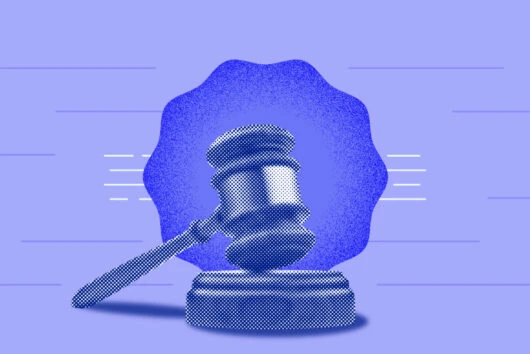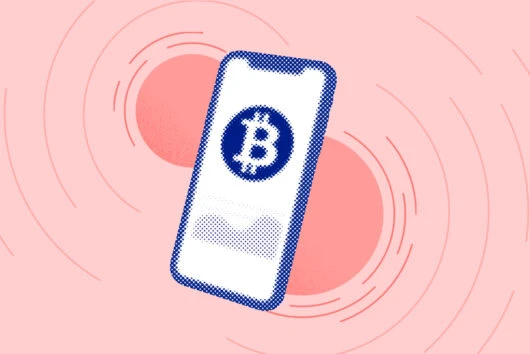A beginner’s guide to the Terra collapse and the future of stablecoins

What exactly happened, and what does it mean for other stablecoins?
The collapse of the LUNA and Terra USD (UST) algorithmic stablecoin project has been major news in the crypto space over the past month, with many analysts speculating about what it means for the future of the industry.
Let’s look at where it all went wrong for Terra and what’s still going right for other stablecoins.
What are stablecoins?
A stablecoin is a cryptocurrency that’s pegged to a single underlying asset such as the dollar, or a basket of assets. Stablecoins achieve this peg through different means.
A stablecoin like USD Coin (USDC), for example, claims that it is 100% backed by cash and short-dated US treasuries, so that it’s always redeemable 1:1 for U.S. dollars. In finance, this is known as Dollar Collateralisation. Tether, another stablecoin, also says it maintains its peg to the dollar by backing its coin 1:1 with the currency.
What is the role of stablecoins?
Price fluctuations have been common in the past for cryptocurrency. Stablecoins have offered investors a safe haven from these market swings by maintaining their price pegged to a mature asset like the dollar or gold, which have historically been less prone to price movements.
Stablecoins also negate the need for investors to withdraw their money from an exchange (and pay the withdrawal fee) when wanting to make a cryptocurrency trade.
There are also other advantages to having what is essentially a digitised representation of the value of an asset, such as making it easier to move that value around the world and making it more secure.
What are the different kinds of stablecoins?
There are two main types: a collateralised stablecoin, which is backed by an asset, and an algorithmic stablecoin, called an algo-stablecoin, which maintains its price through an algorithm that manufactures supply and demand, usually through the creation and burning of coins.
This sounds weird and complicated?
You bet, but let’s take a stab at unravelling this intricate yarn. There are generally two actors at play in an algo-stablecoin project. Let’s take LUNA and Terra, for example, referred to here in the past tense as the project is now defunct for all practical purposes.
A bit of housekeeping
The Terra protocol was started in 2018 by Do Kwon, a South Korean computer developer. Terra’s parts were made up of the stablecoin Terra USD (UST) and her sister coin LUNA, the native coin on the Terra blockchain.
These two coins worked together to create an ebb and flow of supply and demand in the market. TerraUSD was the stablecoin and LUNA was supposed to serve as the buoy that floated TerraUSD at or near its $1 peg.
It did this using an algorithm that manipulated the supply and demand of each coin. “Algorithm” is a fancy, techy word that simply refers to computer code that initiates an action when it is triggered by another.
Still keeping up? Ok…
As per the protocol, users could at any time trade $1 of LUNA for 1 UST. The algorithm governed the burning and creation of the two coins, depending on whether UST was above or below its peg.
So, when UST made moves above its $1 peg, the algorithm would burn $1 of Luna and create 1 UST with each trade, which traders could then sell for $1.01, for example, and pocket the balance, using a widely known trick in investing known as arbitrage. For example, if the price of an asset is slightly higher on one platform, traders will simultaneously sell on that platform and buy on another where the price is lower, pocketing the difference.
This process by Terra incentivised a supply push on UST, and repeating this burning and creation of LUNA and UST eventually led to an increase in the supply of UST, theoretically driving its price back down to its $1 peg.
What happened when the price of UST dropped below the $1 peg?
Exactly the opposite. Users could buy 1 UST for $0.99 and trade it for $1 of LUNA. But instead of burning LUNA this time, the protocol burned 1 UST and minted $1 of LUNA. Remember, the aim this time, when UST needed support, was to decrease the supply of UST and inflate demand. Trading at these levels remained open until UST again reached parity with the dollar.
What went wrong?
UST de-pegged from the dollar around 9 May 2022 due to massive sell-off pressure in the market, causing its price to drop to 91 cents. Before this blow, the LUNA price was already under pressure from bearish sentiment in the wider cryptocurrency market, especially in the alt coin space, which led to a catastrophic imbalance between LUNA and UST.
Traders could now buy $1 of LUNA for 91 cents with their UST. As UST continued to lose its value and the algorithm couldn’t mint and burn coins fast enough to keep up with market movements, the price of UST continued depegging towards the bottom. This led to even more arbitrageurs hollowing out the value of LUNA.
While this was going on, the algorithm tried to keep the UST to its $1 peg by continually issuing more LUNA and burning UST, as it was designed to do. Both UST and its sister token LUNA went into freefall, both collapsing completely within 36 hours.
What was the deal with the Luna Foundation Guard buying 80,000 Bitcoins?
The Luna Foundation Guard (LFG), an entity set up to protect the $1 peg of UST, famously bought 80,000 Bitcoins as reserves in the months prior to the collapse of the project, which were only to be deployed if it all went very wrong.
When it did, the LFG dumped all but 303 of its Bitcoin for UST in a last ditch effort to bolster the coin, but it just further disgruntled the market and caused more damage.
Are all stablecoins this unstable?
No. There’s always been a lot of controversy surrounding algo-stablecoins as there’s no money or other asset reserves backing up these protocols. There’s no parachute. It’s been referred to by some analysts as financial alchemy, creating money out of thin air, which, in a sense, is exactly what it is.
On the other hand, a collateralised stablecoin like USDC is backed up 1:1 with the dollar. As noted above, Circle, the company behind USDC, says it holds cash and bonds worth $1 in reserve for each USDC in circulation. The company also provides proof of reserve audits on a regular basis to back this up.
Isn’t Bitcoin created out of thin air?
Nope. The only Bitcoin that was ever created was minted on the first block by Satoshi Nakamoto, and hasn’t moved to this day. Satoshi, the project founder(s) stepped back and disappeared to let the decentralised Bitcoin protocol run its course, subject to the whims of the free market. Bitcoins are only created when miners add transactions to the block.
If there is a silver lining to the Terra collapse, it’s that it has highlighted the faults in these types of under-collateralised systems, but the saga has also shone a light on those that work exactly as they were designed to.
 Discover
Discover Help Centre
Help Centre Status
Status Company
Company Careers
Careers Press
Press

